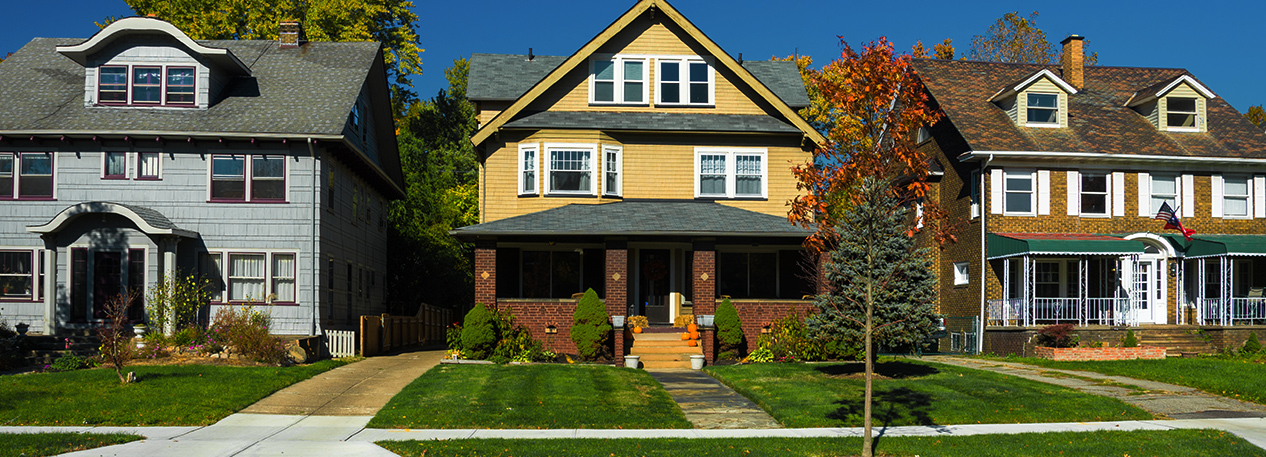
President, Risk Assessment, Data
Analysis, and Research Group
Pandemic recovery in the mortgage market has entered a critical phase. Our latest estimates indicate that since the onset of the pandemic, 8.5 million borrowers have paused their mortgage payments by requesting loan forbearances. This temporary relief came at a critical time as borrowers faced unprecedented disruptions to their incomes and jobs. The CARES Act required that borrowers of federally insured mortgages be granted forbearances by simply requesting them and shielded borrowers in forbearance from negative impacts to their credit, while foreclosure moratoria and other protections safeguarded most borrowers from foreclosure. Private sector mortgages adopted these same practices. Temporary protections against foreclosure ended on January 1, around the same time that loans in forbearance reached their maximum terms allowed. As of early February, an estimated 700,000 of these loans remain in forbearance. However, roughly 1 million mortgages that came out of forbearance or never requested it remain seriously delinquent, or more than 90 days past due on their mortgages.
An analysis summarized in our newly released report shows that around half of these seriously delinquent borrowers are not in any kind of loss mitigation plan with their servicers. Of the other half ― those who do have loss mitigation plans ― close to three-quarters have not yet resumed payments. Thus, many of these borrowers are facing the prospect of foreclosure. Our researchers at the Philadelphia Fed, however, see options for these mortgages.
In a recent working paper examining economic inequality among mortgage borrowers, our experts found that the COVID-19 pandemic impacted lower-income and minority borrowers disproportionately in terms of their ability to pay their mortgages. But they also found that widespread access to forbearance programs helped lessen these disparities, and lower-income and minority borrowers took advantage of these relief programs at higher rates than White borrowers. Since forbearance only provides temporary relief, the authors also sought to analyze options that can help borrowers get back on track. These options include repayment plans, no-cost deferrals of their past due payments, or loan modifications, which can reduce monthly payments by as much as 20 percent or more.
What made this analysis unique is the richness of the data that researchers examined. They merged demographic and income data collected from confidential Home Mortgage Disclosure Act (CHMDA) data with Equifax credit bureau data as well as mortgage service data on loss-mitigation activities from the nation’s largest mortgage service bureau, the Mortgage Servicing Platform owned by Black Knight, which processes payments on over two-thirds of loans in the U.S. mortgage market. This provided researchers with access to comprehensive and real-time data on all forbearance and loss-mitigation activities.
This full-picture approach revealed three important insights: 1) awareness of options for homeowners is key, 2) the market is different now than in 2008, and 3) an important policy change that would improve home-retention options for borrowers is to fast track the Federal Housing Administration’s (FHA) 40-year mortgage for borrowers in need of a loan modification. We caught up with Larry Cordell, who leads the Bank’s RADAR Group to expand on these insights.
Q: In the paper, you note that “federal and private forbearance programs have provided a lifeline to millions of struggling mortgage holders, as minority and lower-income borrowers took up forbearances at significantly higher rates,” but you also note that “some borrowers who missed forbearance opportunities could simply be unaware of forbearance options.” How important is awareness building and communication between lenders and borrowers? How can policymakers support this?
LC: Two important things to know about today’s loss mitigation process are: Borrowers don’t have to prove hardship to get a deferral or loan modification, and servicing rules adopted by the Consumer Financial Protection Bureau (CFPB) require that servicers must offer borrowers these options before they place a loan in foreclosure. During the Great Recession, borrowers had to document hardship and show they didn’t have the income to support the mortgage. And these CFPB rules were not in place to protect borrowers against foreclosure. Today, borrowers in federally insured loans simply need to request a loan modification to get one. Increasing awareness and educating borrowers about these home-retention options can help borrowers avoid foreclosure. Borrowers need to reach out to their servicers to start the process that CFPB rules require of mortgage servicers. With the exceptionally strong housing market, many distressed borrowers have equity in their homes and can take advantage of the new loan terms if they wish to stay in their homes.
Q: There is increasing concern about foreclosures as terms expire and roughly half of seriously delinquent borrowers not in forbearance are not listed by their servicers as being in loss mitigation. You mention in the paper that our current environment is different from the Great Recession and the impact it had on the housing market. Can you explain why or in what way it is different now?
LC: The biggest difference is that today we have a housing market characterized by rapidly rising house prices and excess demand for homes, exactly the opposite of market conditions during the Great Recession. In the first 16 months after the Great Recession, house prices went down by 20 percent, whereas over the same period following the COVID-19 pandemic, house prices increased by 21 percent. It’s a night and day comparison! Also, mortgages today are much more conservatively underwritten with borrower incomes fully documented at origination. Today, most borrowers have substantial equity in their homes, even those who are currently seriously delinquent. During the Great Recession, most seriously delinquent borrowers were “underwater,” meaning their homes were worth less than the value of their loans. The positive equity scenario that borrowers have today provides them with more options to avoid foreclosure. They can take advantage of the various home-retention options or sell their homes to extract the equity. While a sale may not be ideal and present challenges related to finding other housing options, it will help avoid any damage to their credit.
Q: Also, in the analysis you describe that, for some borrowers who are at high risk of foreclosure, there is a strong case for fast tracking the adoption of a 40-year GNMA mortgage security. Can you describe what this is, and why could it be a good option for some borrowers?
LC: Essentially, extending the term of a modified mortgage to 40 years lowers the payment much more than extending loan terms to only 30 years, which is at present the maximum term allowed on an FHA mortgage. For reasons we describe in our working paper, a loan modification with a 40-year mortgage overall costs the FHA less than a 30-year one. It is a win-win for borrowers and the government! The challenge is that there is presently no security offered by the Government National Mortgage Association (GNMA) allowing for 40-year terms. That is presently under construction by GNMA and hopefully will be rolled out soon.
Q: The paper also mentions another tool that the Federal Reserve Banks of Atlanta and Philadelphia developed to help policymakers, community groups, and servicers identify where mortgage borrowers in forbearance are concentrated. Can nonprofits and local officials use these maps effectively to help lessen the impact on their communities and constituents and if so, how?
LC: Yes, the Mortgage Analytics and Performance Dashboard (MAPD) tool was developed in partnership with the Federal Reserve Bank of Atlanta. We, the Philadelphia Fed, provide the data. As we describe in the paper, minority and lower-income borrowers have been disproportionately affected by the pandemic, and this tool allows Housing Finance Agencies (HFAs) and others to examine communities where loans in forbearance or delinquency are most concentrated. The CARES Act and American Rescue Plan (ARP) also provided resources to HFAs to provide direct assistance to borrowers. One example is how states used the MAPD to produce assessments of their homeownership needs as part of the Homeowner Assistance Fund (HAF). This tool enabled them to create data-driven reports that tracked mortgage delinquency and forbearance rates at the state, county, and zip-code level. Fed staff who work in local communities as part of our Community Outreach and Regional Development Department have promoted the tool to housing advocates and nonprofits who are providing outreach to assist their local homeowners with identifying recovery options.
- The views expressed here are those of Larry Cordell and do not necessarily reflect those of anyone else at the Federal Reserve Bank of Philadelphia or the Federal Reserve System. Some portions of this interview have been edited for space.
